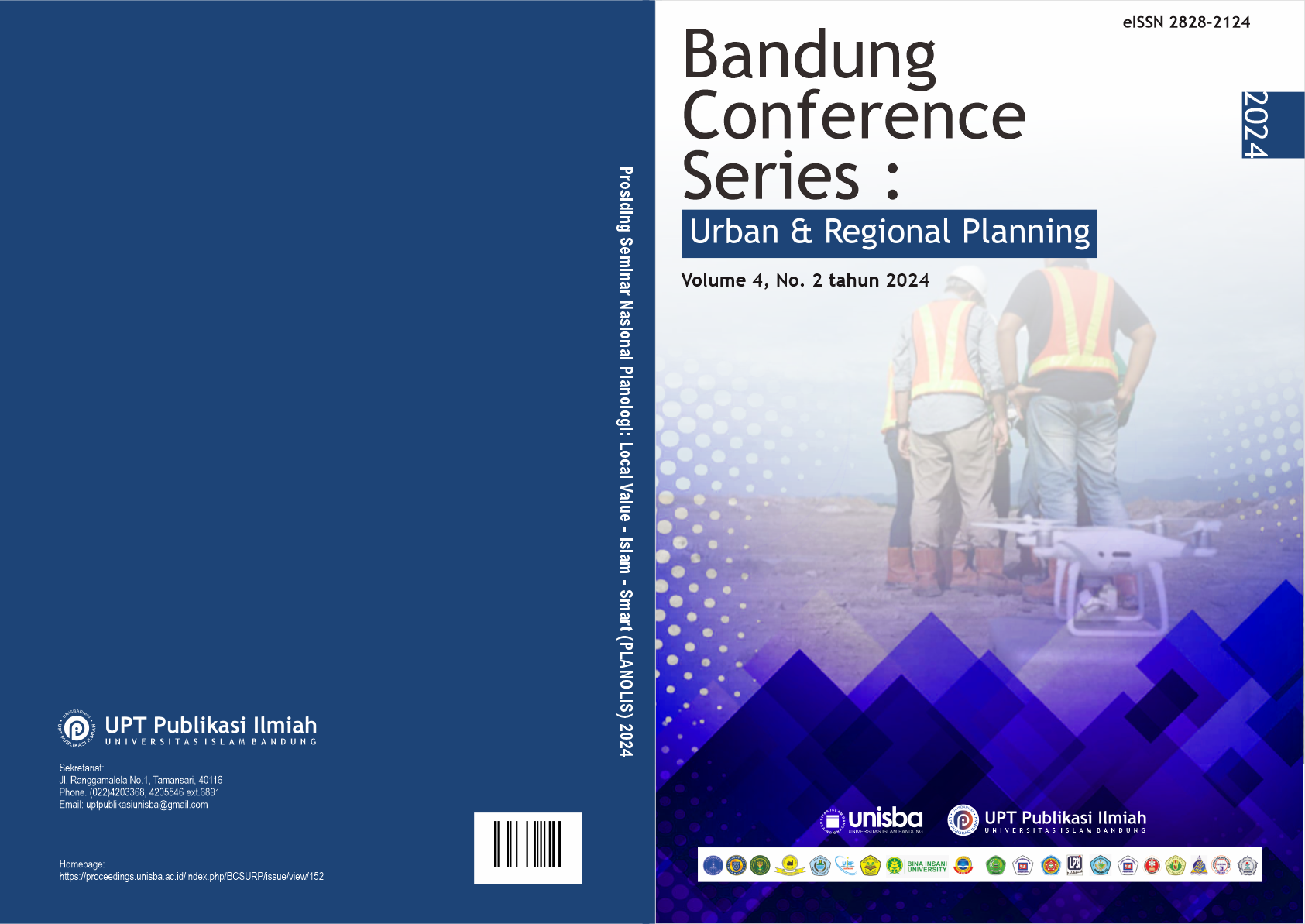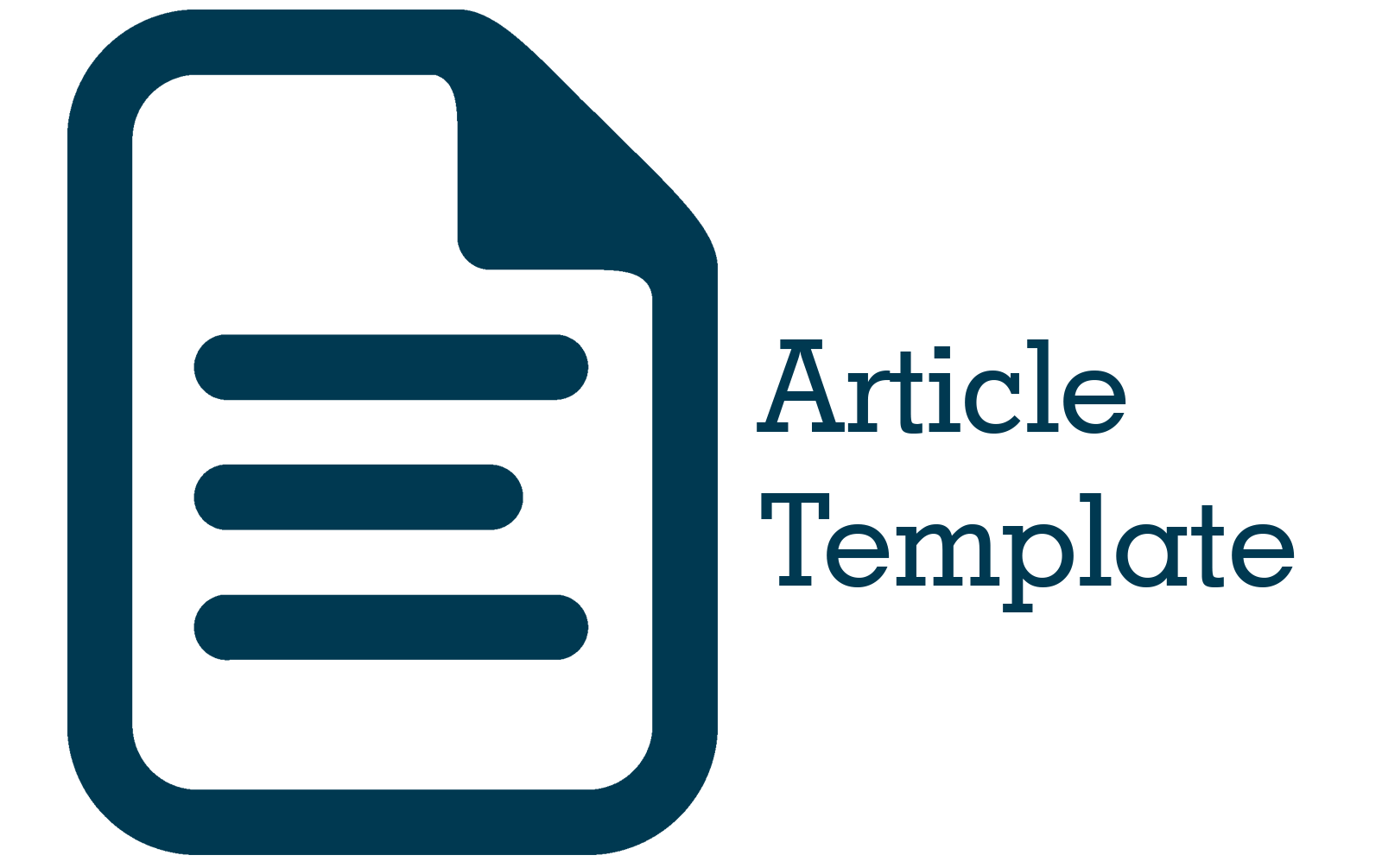Community Empowerment Alternatives to Rural Drinking Water Infrastructure Problems: Case Study of Rural SPAM in Krangkeng District, Indramayu Regency
Abstract
Abstract. The Drinking Water Supply System (SPAM) is a basic community need that must be provided by the government. Water availability is currently a problem in rural areas of Krangkeng District. The condition of the region often experiences drought during the dry season and only 59.27% of people have access to adequate drinking water. Every year the government provides assistance in the form of physical development and water supply via tank trucks. The lack of public awareness in the sustainable implementation of SPAM has resulted in this problem recurring every year. With this phenomenon, community empowerment efforts are needed to create increased community capacity and active community participation in managing the drinking water supply system in Krangkeng District so that it can be sustainable. This research aims to identify community empowerment alternatives described in the aspects of implementing rural SPAM in Krangkeng District using a qualitative descriptive approach. The research results show that there are aspects that are problematic in implementing SPAM in terms of planning for the provision of infrastructure and drinking water services that are not yet structured. Technically, there is limited water infrastructure that can be utilized, there is no management institution, minimal funding allocation related to SPAM, minimal regulatory aspects and there has been no effort to improve from a social perspective related to the sustainability of SPAM. Based on these aspects, the community empowerment alternatives that can be implemented are education and awareness about the importance of drinking water use, community involvement both as management institutions (pokmas) and as users, involvement in collaborative advocacy networks with external parties, and involvement in monitoring and evaluation. It is hoped that this research can help stakeholders in Krangkeng District in efforts to mitigate problems with the implementation of SPAM and the sustainability of water resources in the future.
References
Bappenas. (2019). Minister Bambang: Accelerating Improvements in Access to Drinking Water and Sanitation Through Investment in Various Funding Sources Increases ODF Achievements as Well as Economic and Non-Economic Benefits. 3–7. https://bappenas.go.id/id/berita-dan-siaran-pers/menteri-bambang-percepatan-perbaikan-akses-air-minum-dan-sanitas-via-investasi-berbagai-Source-pendanaan-angkatkan- achievements.
Jalaluddin, RR, Pirngadie, DBH, & .. (2020). Study of Drinking Water Supply in Drought Areas, Krangkeng District, Indramayu Regency. http://repository.unpas.ac.id/id/eprint/50160
Kativhu, T., Mazvimavi, D., Tevera, D., & Nhapi, I. (2018). Implementation of Community Based Management (CBM) in Zimbabwe: The dichotomy of theory and practice and its influence on the sustainability of rural water supply systems. Physics and Chemistry of the Earth, 106, 73–82. https://doi.org/10.1016/j.pce.2018.05.003
Mustikawati, I., & Hindersah, H. (2022). Strategy for Sustainable Improvement of Cimahi City Clean Water Services. Journal of Regional and Urban Planning, 17 (1). https://doi.org/10.29313/jpwk.v17i1.597
Nguyen, M.T., Vu, Q.H., Truong, V.H., & Nguyen, H.H. (2023). A comprehensive evaluation of private sector investment decisions for sustainable water supply systems using a fuzzy-analytic hierarchy process: A case study of Ha Nam province in Vietnam. Heliyon, 9 (9), e19727. https://doi.org/10.1016/j.heliyon.2023.e19727
Oktavianisya, N., Aliftitah, S., & Hasanah, L. (2020). Community Empowerment in the Use of Clean Water and Drinking Water in Cangkreng Village, Lenteng District. JAPI (Journal of Access to Indonesian Service), 5 (2), 98–107. https://doi.org/10.33366/japi.v5i2.2120
PDAM Indramayu. (2023). Help with Drought in the Kerangkeng Area with the Regent of Indramayu. https://www.pdamindramayu.co.id/berita-detail?id=6
Pérez-Vidal, A., Escobar-Rivera, J. C., & Torres-Lozada, P. (2020). Development and implementation of a water-safety plan for drinking-water supply system of Cali, Colombia. International Journal of Hygiene and Environmental Health, 224 (November), 113422. https://doi.org/10.1016/j.ijheh.2019.113422
Pirngadi, BH, Syarifudin, D., & As Siddiq, MZR (2023). Review of The Water Carrying Capacity and Water Flow at RDTR of The Spatial Planning of Tegalluar Residential Integrated Area in Bandung Regency. Journal of Community Based Environmental Engineering and Management, 7 (7), 85–104. https://doi.org/10.23969/jcbeem.v7i2.10211
Saputro, ADH (2023). Community Empowerment in the Management of Rural Community-Based Drinking Water Supply and Sanitation Systems in Jlumbang Village, Kandangan District, Kediri Regency. 1–10. http://eprints.ipdn.ac.id/14960/2/REPOSITORY.pdf
Susanto, A. (2017). Water Friendly City Management Using a Water Metabolism City Approach to Support Development. The Role of Mathematics, Science and Technology in Achieving Sustainable Development Goals/SDGs, 3 (7), 181–208.
Swastomo, AS, & Iskandar, DA (2020). Sustainability of Community-Based Rural Drinking Water Supply Systems. Sukowati Research and Development Journal: Research and Development Media, 4 (2), 14. https://doi.org/10.32630/sukowati.v4i2.131
Yefni, Y., & Haris, M. (2019). Environmental Empowerment Through the Community-Based Drinking Water and Sanitation Provision Program (Pamsimas) in Padang Mutung Kampar Village. Civil Society: Journal of Islamic Studies and Community Development, 4 (1), 13. https://doi.org/10.24014/jmm.v4i1.7612












